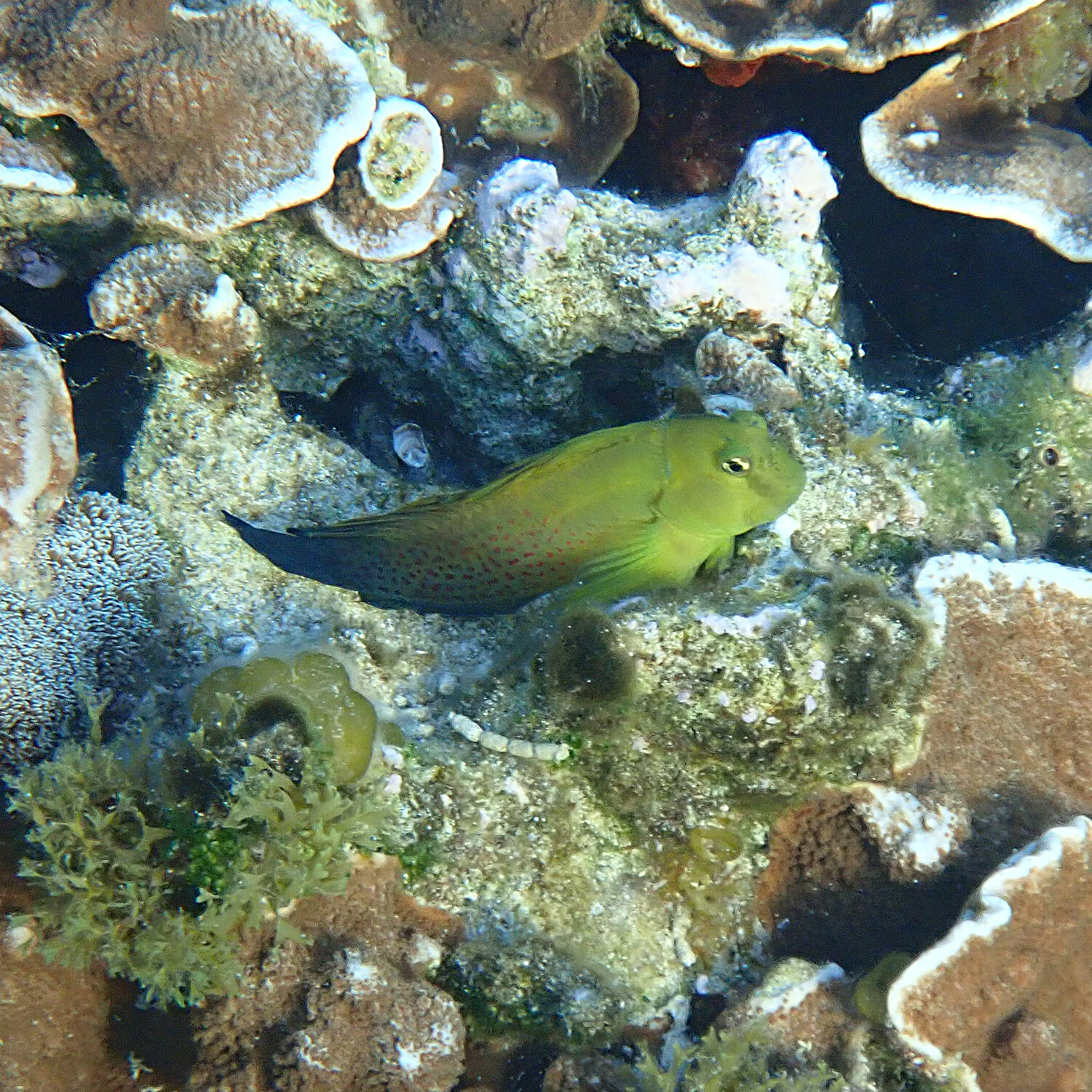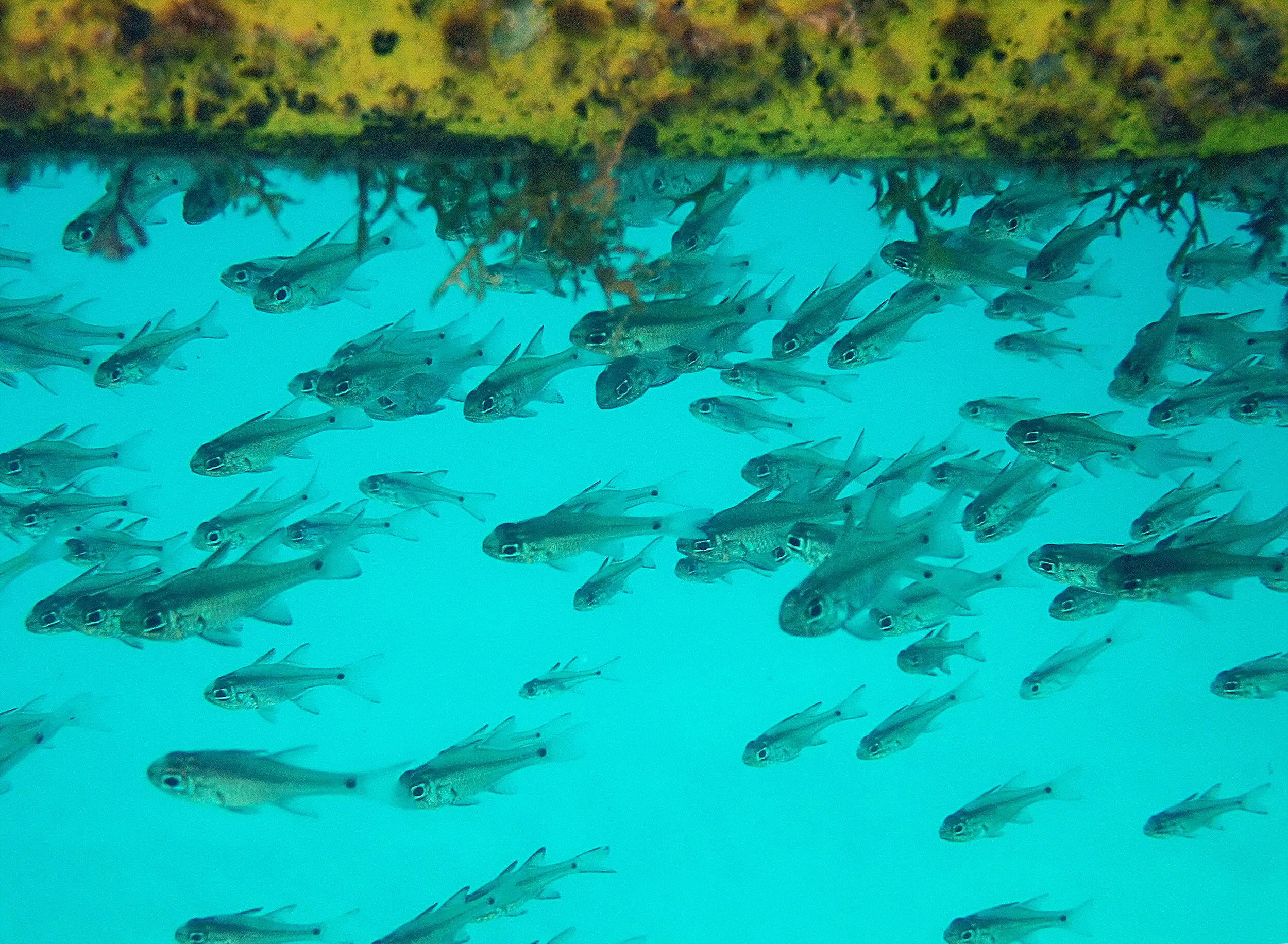It has been a stellar long weekend here on Norfolk Island. Show Day yesterday saw everyone out enjoying themselves, admiring the exhibits and catching up with friends. We have been very lucky here with regards to the pandemic. So far. But we mustn’t be complacent.
A couple of weeks ago I mentioned the Lady Musgrave blenny, Cirripectes chelomatus, and how I anticipated they would be changing colour any day now. Sure enough, I photographed one individual on 5 October, and he was dark in colour with just the teeniest beginnings of a colour change showing. That same individual now has his best bib and tucker on just five days later – presumably looking for a like-minded blenny to share red wine by the fire and moonlit beach walks! I am very confident this is the same individual. I visit him all year long (and we are on first name terms!). This is a remarkable change. On iNaturalist, a citizen science site for posting observations of plants and animals, the identifier of my observation referred to it as ‘nuptial coloration’. There’s a great little article on this phenomenon here: ‘Men With Style – Nuptial Colouration in Fish’.
In the water has been fantastic, too. It is warming up, and with that some small changes in behaviour are apparent. For example, the Norfolk cardinalfish, Ostorhinchus norfolcensis, are pairing off. These guys are mouth breeders, so the male keeps the eggs safely in there until they hatch. I did a story about them on this blog last year. It is fascinating, so do check it out. There were plenty of Pacific rockcod, Trachypoma macracanthus, hanging around down in Slaughter as well. Preferring to hide under reef overhangs, it is lovely when you catch one out in the open. Such a splash of colour.
At the far end of Slaughter Bay, almost as far as you can go before you hit the shallows near the pier, I came across our resident female southern eagle ray, Myliobatis tenuicaudatus. She has been around quite a while – I’d love to know how long – and is easily recognised because of her stumpy tail. She ranges throughout the lagoons, and in fact the next day I saw her just off Lone Pine. She was totally unconcerned as I watched, approaching me as she concentrated on bashing down into the sand to find some tasty morsels. An inscribed wrasse, Notolabrus inscriptus, followed her closely, just in case she missed something!
I also took some more photos of under the raft. I have discussed this before, here. But, in brief, over the years the raft has provided shelter beneath its timbers for a thriving fish nursery. Beneath the raft was an amazing sight, teeming with fry. I have photos of it before it was rebuilt with flotation tanks in the spaces between the timbers, and since. For whatever reason, the fish simply have not used the raft that much since it was rebuilt. We have had no babies to speak of under here since we got the new design. Those we do get can’t hide from the trevally as they sweep past in a pack hunting for a meal. How this translates to numbers of fish at large in the bay, I have no idea. I’ve only posted a photo from before and from this week on here. I’ve recorded the whole story every month in between, and nothing.
In last weekend’s newspaper, we had the monthly newsletter from the Administration in which he spelled out the issues with the water quality around the island, and particularly in the lagoon areas. On one hand, it is sad to see, but also, it has been something of the elephant in the room. Now we have recognition of the problem by the Commonwealth Government, then perhaps we are on the path to realising a solution. And we need a solution very soon. You can find more on my thoughts about the situation in this article, here, ‘The State of Play on Norfolk Island’s Reef’.
Until next week …










